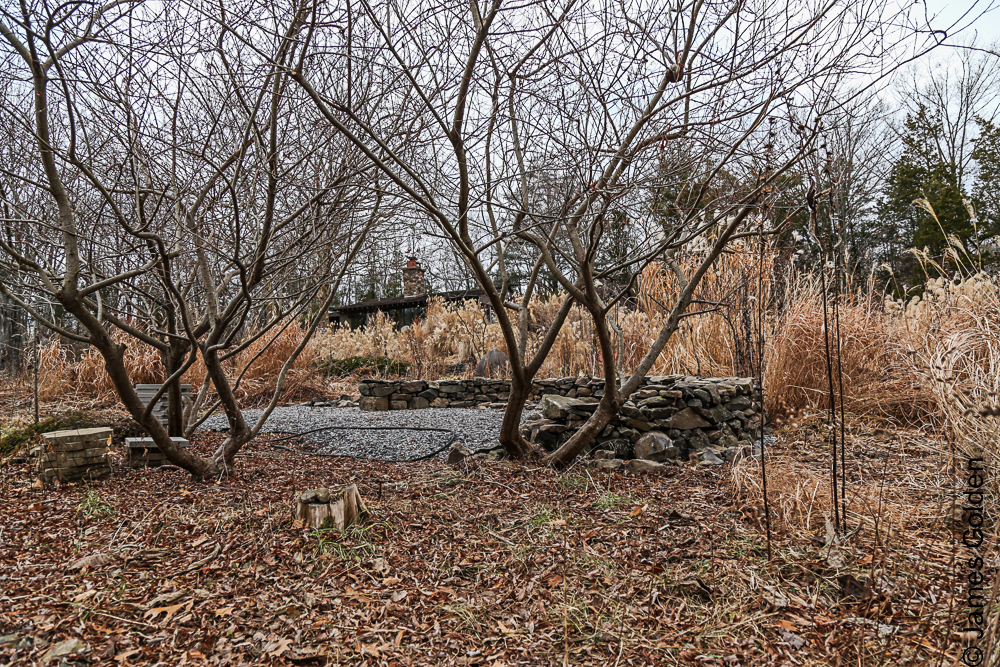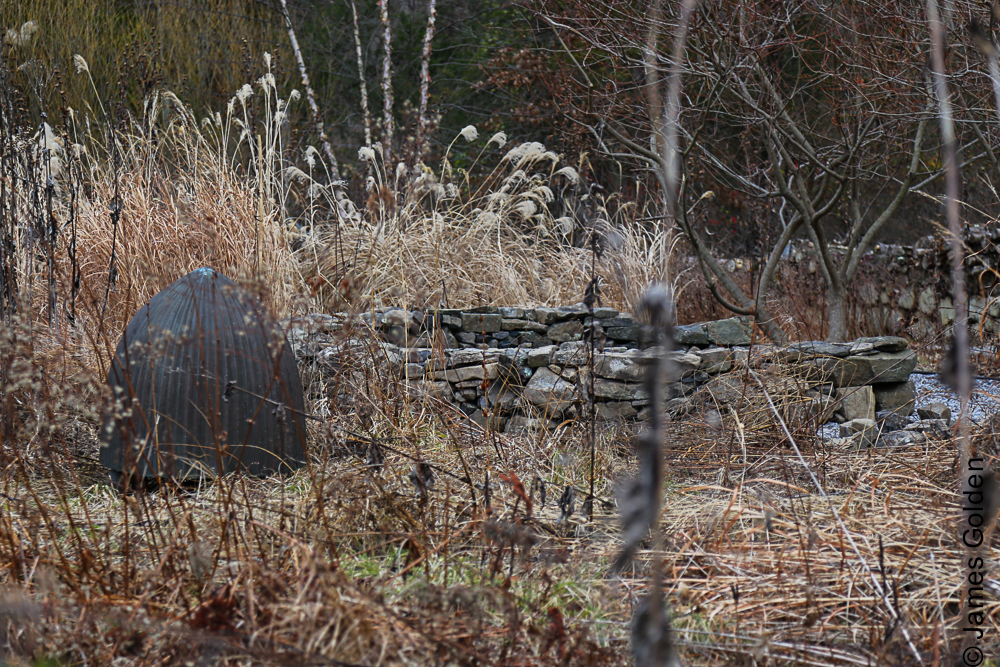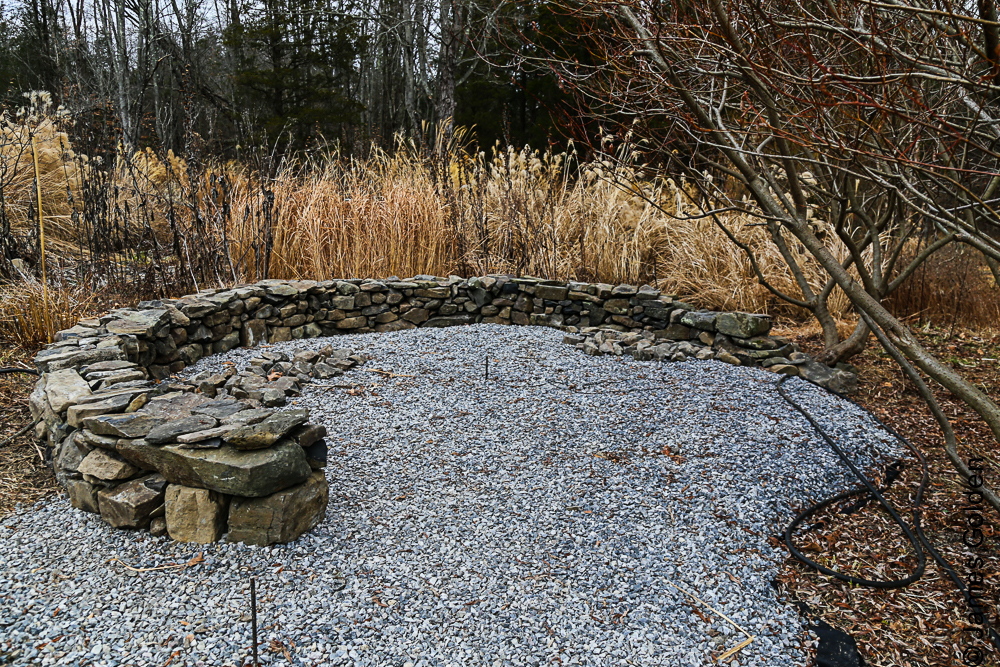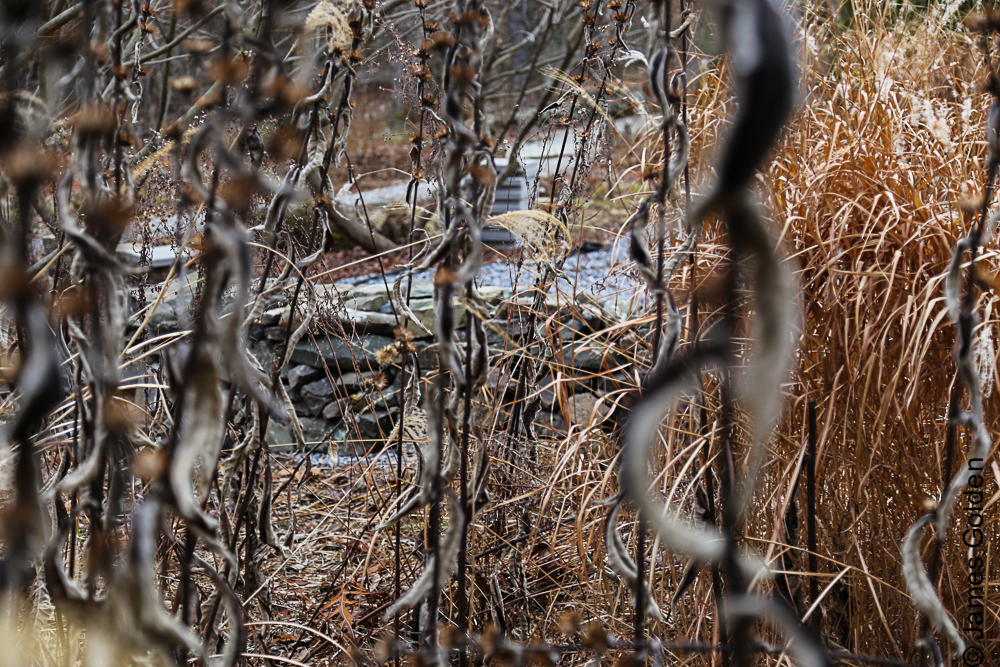Stone circles
 I'd been thinking about making more open space in my garden for a long time ... a significant feature, somewhere in the middle. Then Carrie Preston visited from The Netherlands last summer and said, "Why don't you use more stone. You have so much. Use what you have." Or something to that effect. I eventually would have done it, but Carrie's push moved me into action.I settled on a location on the opposite side of the largest planted area in the garden, nestled against three tall Japanese Fantail willows (Salix sachalinensis 'Sekka'). Once this large circle is complete (fourteen feet across, inside the stone wall), I'll add a much smaller circle (to the right in the photo above, left below), as a kind of antechamber, with a lower wall.
I'd been thinking about making more open space in my garden for a long time ... a significant feature, somewhere in the middle. Then Carrie Preston visited from The Netherlands last summer and said, "Why don't you use more stone. You have so much. Use what you have." Or something to that effect. I eventually would have done it, but Carrie's push moved me into action.I settled on a location on the opposite side of the largest planted area in the garden, nestled against three tall Japanese Fantail willows (Salix sachalinensis 'Sekka'). Once this large circle is complete (fourteen feet across, inside the stone wall), I'll add a much smaller circle (to the right in the photo above, left below), as a kind of antechamber, with a lower wall. Looking back toward the house, from under the Fantail willows (above). This is a shady area I'll probably fill with ferns--certainly many Matteuccia struthiopteris as well as other plants that can work in competition with the tree roots.
Looking back toward the house, from under the Fantail willows (above). This is a shady area I'll probably fill with ferns--certainly many Matteuccia struthiopteris as well as other plants that can work in competition with the tree roots. Renovation of plantings around the circles will be on the garden list for this spring since there will be a lot of damage to repair. But I have no doubt all will be well by mid-June. (Above you see the crushed remains after snow and ice fell Thanksgiving week, ending much of the garden early this year. The grasses mostly still stand but many perennials were flattened.)
Renovation of plantings around the circles will be on the garden list for this spring since there will be a lot of damage to repair. But I have no doubt all will be well by mid-June. (Above you see the crushed remains after snow and ice fell Thanksgiving week, ending much of the garden early this year. The grasses mostly still stand but many perennials were flattened.) I haven't decided on what paving to use over the gravel base layer. If I can't find affordable flat stone to make a kind of Japanese paving, I may use concrete squares, quickly aged with mud from the pond.Though the circle looks very prominent now, it will quickly blend in when growth starts in late spring. Below is a veiled view of the work area through still standing Inula racemosa 'S0nnenspeer' and Miscanthus purpurascens.
I haven't decided on what paving to use over the gravel base layer. If I can't find affordable flat stone to make a kind of Japanese paving, I may use concrete squares, quickly aged with mud from the pond.Though the circle looks very prominent now, it will quickly blend in when growth starts in late spring. Below is a veiled view of the work area through still standing Inula racemosa 'S0nnenspeer' and Miscanthus purpurascens. The incomplete circle is already having an effect, giving the eye--and the body--a place to rest. A sign and promise of tranquility and repose.
The incomplete circle is already having an effect, giving the eye--and the body--a place to rest. A sign and promise of tranquility and repose.